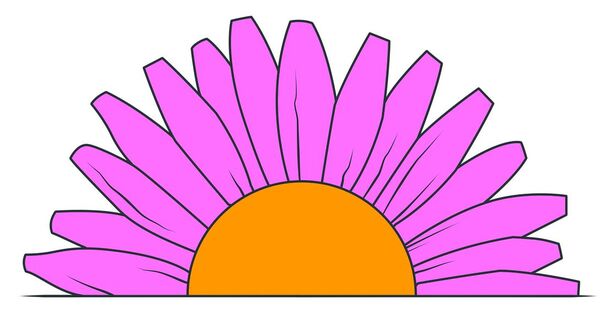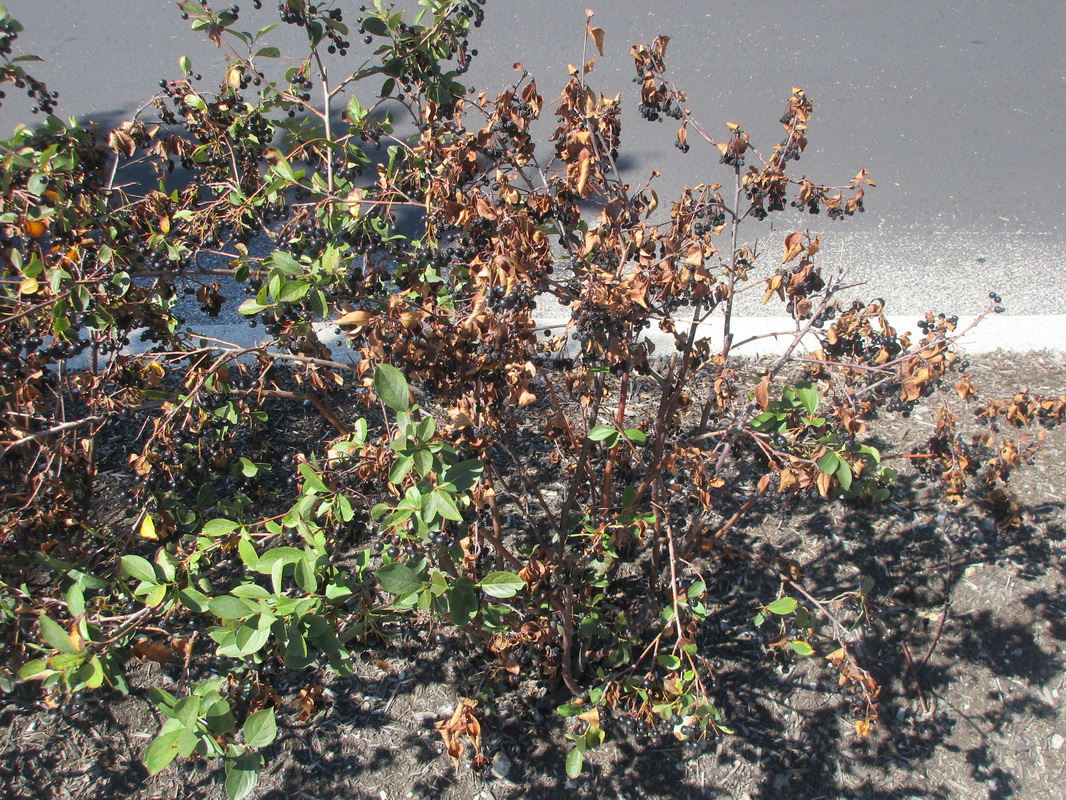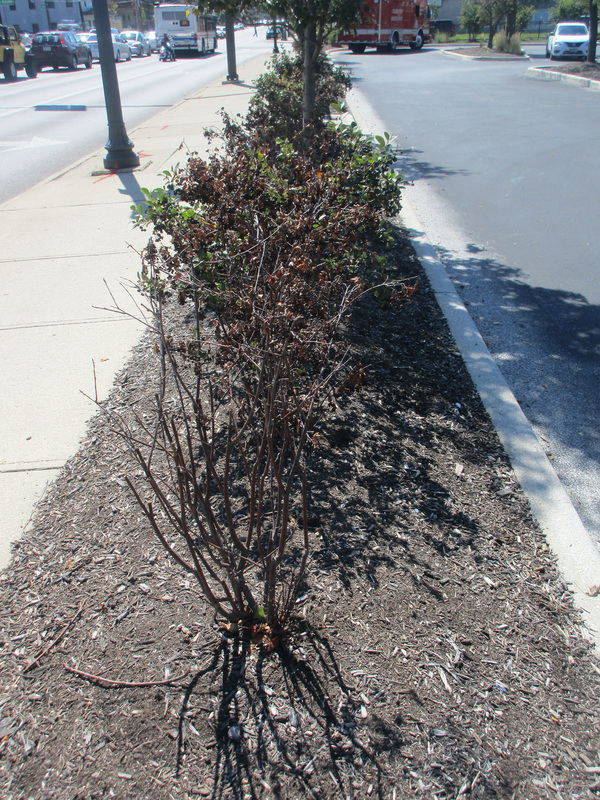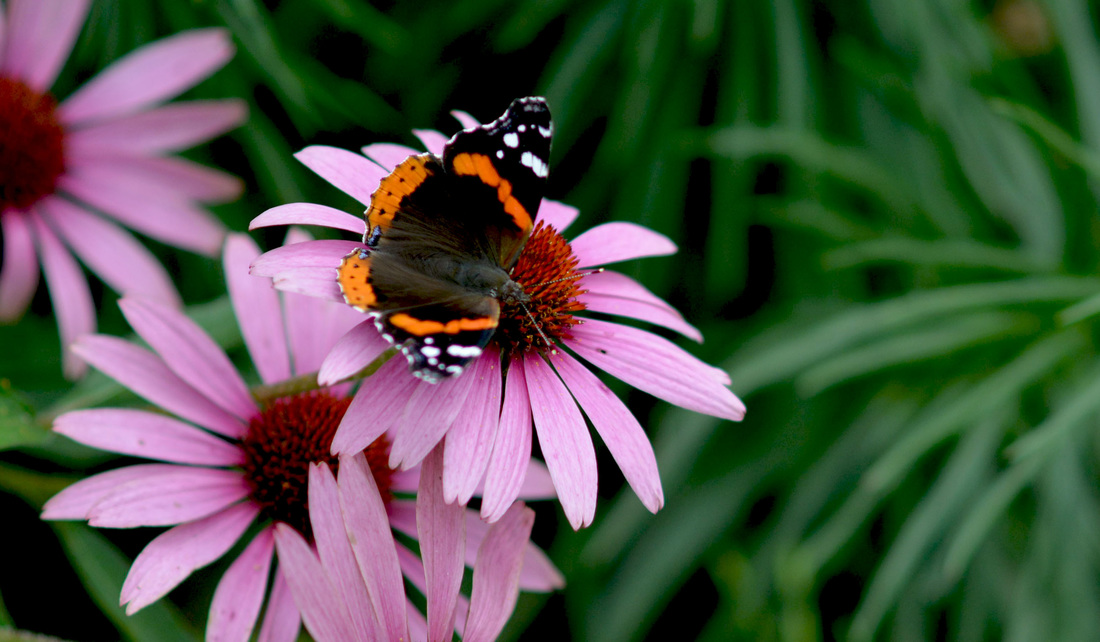|
Here are some Aronia shrubs that have been failing since they were planted. A beautiful shrub native to Ohio (usually called chokeberry) that was planted in a parking lot. This plant can be found in low areas and likes moist ground. So why is it here, in one of the driest microclimates imagineable? An irresponsible waste of resourses that will only cost more money shortly. Far too often a plant that is actually native is planted in a location that very plant is NOT native to. Just because a plant is native to Ohio doesn't mean that it can be planted anywhere someone wants native plants. This is a complete shame regardless, especially since Aronia is becoming popular for its berry's juice. Also a great example of the more the merrier when it comes to fruit production. Dead leaves on the same stem as fruit?
Here is a red admiral butterfly in our backyard feeding on a coneflower. There were more of these butterflies this summer than usual. This spike in population is common with plants as well. As an example, you may notice some pine trees have a huge crop of pine cones for a year or two and have a few years of normal cone production.
Here are the berries of redosier dogwood or red twigged dogwood. The white color is pretty amazing! The berries are a favorite food of birds so it isn't often they stay around that long. In most large-scale nurseries dogwood shrubs don't get to set much fruit for two main reasons: they are constantly sprayed with insecticide which wipes out pollinators, and they grow fairly rapidly so they are constantly shear pruned to push new growth. They do grow in the wild in central Ohio, but are usually confined to low areas. They are extremely hardy and can really take the cold without problems. The red stems tend to get a brighter red in the winter which makes for a nice break in the brown and grey of central Ohio's winter. As the main stems age, they lose vigor and color, so removing the older stems keeps the younger stems vigorous. This shrub is widely available but it is more common to find "fancy" dogwood shrubs of different varieties or species altogether. It is usually listed as Cornus sericea or Cornus stolonifera. I really like this shrub if it is planted in the right location and it is well taken care of. The excellent fall color is just another asset.
|
Archives
June 2024
|





 RSS Feed
RSS Feed